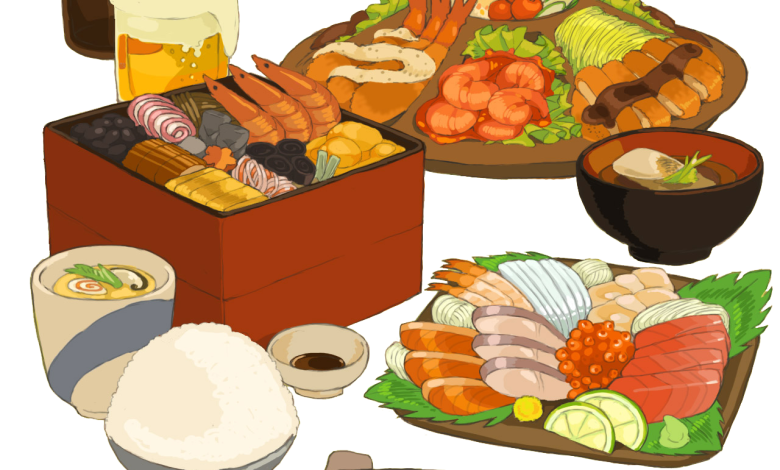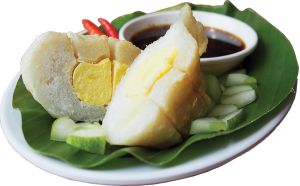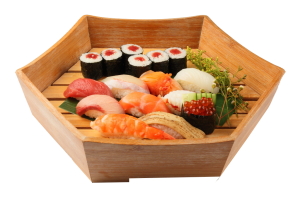best foods in japan
What is Japan’s famous foods? The reason Japan’s cuisine is famous
Japan's famous foods

Japan’s most famous foods:
Japanese cuisine is recognized for being both varied and delicious. Here are some of the most well-known meals in Japan:
- Sushi:
- One of the most recognizable Japanese foods is probably sushi. The usual ingredients include vinegared rice, raw or cooked fish, vegetables, and occasionally tropical fruits. Nigiri (fish on rice) and Maki (seaweed-wrapped rolls) are popular varieties.
- Sashimi:
- Sashimi is raw fish that has been finely sliced and is typically served with soy sauce and wasabi. It is a display of excellent, fresh fish and seafood.
- Ramen:
- Wheat noodles, a flavorful broth (typically cooked with chicken or pig), and numerous toppings, including sliced pork, boiled eggs, seaweed, and vegetables, are the main ingredients in the popular noodle soup dish known as ramen.
- Tempura:
- In the recipe for tempura, vegetables, shellfish, or other items are deep-fried while being covered in a thin, crunchy batter. It frequently comes with dipping sauce.
- Udon and Soba:
- Japanese noodles like soba and udon are often consumed. While Soba noodles are thin and manufactured from buckwheat flour, Udon noodles are thick and chewy. They come in a variety of toppings and can be served hot or cold.
- Yakitori:
- Chicken chunks on skewers are grilled while being seasoned with salt or a sweet soy sauce in yakitori. It is a well-liked meal served at izakayas, or Japanese pubs.
- Okonomiyaki:
- A batter of flour, grated yam, eggs, shredded cabbage, and different toppings including meat, fish, and vegetables is used to make the savory pancake known as an okonomiyaki. Mayonnaise and a special sauce are frequently poured over it.
- Takoyaki:
- Round, savory takoyaki are formed from a batter of octopus and wheat flour. They are generally covered with takoyaki sauce, mayonnaise, seaweed, and bonito flakes and are crispy on the exterior and soft on the inside.
- Gyoza:
- Japanese gyoza are thin-dough dumplings stuffed with ground meat (typically pig) and vegetables. They are often served with a dipping sauce and pan-fried.
- Sukiyaki:
- Thinly sliced beef, tofu, veggies, and noodles are cooked in a sweet and savory broth based on soy sauce in the hot pot meal known as sukiyaki.
- Matcha:
- Finely powdered green tea powder known as matcha is ingrained in Japanese culture. It is frequently used to various sweets and is also used to prepare traditional tea.
- Mochi:
- A sticky rice cake called mochi is formed from pounded rice. It is frequently consumed either simple or with savory or sweet ingredients.
These are only a few examples of Japan’s vast and varied culinary heritage, which is renowned for its tastes, presentation, and meticulousness.

The reason Japan’s cuisine is famous:
Japan’s food, often known as Washoku (traditional Japanese cuisine), has become well-known and respected around the world for a number of reasons:
- Flavor and Taste:
- Japanese food is renowned for its complex and delicate tastes. In Japanese cuisine, the harmony of the sweet, salty, sour, umami, and bitter flavors results in a distinctive and alluring culinary experience.
- Fresh and High-Quality Ingredients:
- Fresh, in-season, and top-notch ingredients are heavily valued in Japan. Whether it’s rice, veggies, fish, or other ingredients, the emphasis on quality improves the food’s flavor and nutritional content.
- Presentation and Aesthetics:
- Japanese food is well known for its precise and artistic presentation. Each dish is artistically prepared to showcase a harmony of hues, shapes, and textures.
- Culinary Techniques and Skill:
- Japanese cooking methods including creating sushi, frying tempura, using a knife, and performing tea ceremonies need years of expertise and instruction. The elegance and quality of Japanese cuisine are attributed to the mastering of these methods.
- Healthy and Balanced Diet:
- Japanese food is frequently praised for being healthy. It places an emphasis on eating a well-balanced diet with a focus on fresh, low-fat, and low-calorie foods, helping to improve people’s general well-being.
- Cultural Heritage and Tradition:
- Japanese food is appealing due to its rich cultural background and customs. The authenticity and time-honored traditions of Japanese culinary arts have been preserved via the generations-long transmission of techniques and recipes.
- Diverse Range of Dishes:
- From the straightforward pleasures of sashimi to the intricate flavors of a multi-course Kaiseki feast, Japan provides a wide variety of foods. Since there is something for every palate thanks to this variety, Japanese food is appealing and available to a wide audience.
- Seasonal Cuisine:
- The use of seasonal foods in Japanese cuisine guarantees that the freshest components are used in each meal. The gastronomic experience is enhanced by this seasonal approach.
- Influence on Global Dining Trends:
- The popularity of Japanese food across the world has inspired international dining fads. Many nations today have many sushi bars, ramen shops, and other restaurants with Japanese influences.
- Attention to Detail and Precision:
- Japanese chefs are renowned for their rigorous attention to detail and accuracy in preparation, plating, and serving, which produces outstanding delicacies that enthrall guests.
- Culinary Tourism and Exposure:
- Global interest in and fascination with Japanese food has greatly benefited from the expansion of culinary tourism as well as increasing exposure via social media and travel.

Together, these elements have made Japanese cuisine a famous culinary art on a global scale, luring foodies from all over the world to sample the tastes, preparation methods, and cultural elements that make it so unique.

